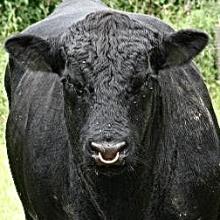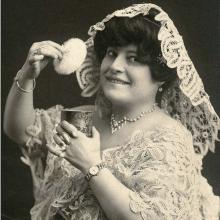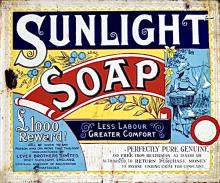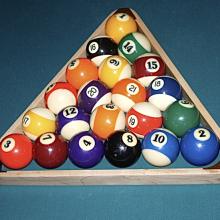
On the surface, all appeared to be well at the Industrial Hall, Edinburgh’s first purpose-built exhibition space, as a new year dawned.
On 6 January 1925, beneath a positive review for a similar show at the ailing Waverley Market venue, the Edinburgh Evening News sang the praises of the soon-to-conclude World’s Fair and Carnival:
As an ideal carnival the Industrial Hall show will take ‘some beating.’ There is everything in the Hall to make an appeal to the public. Both adults and children can spend many pleasant hours, and, incidentally, a good deal of money if they are so inclined. There are side-shows, roundabouts, and games of skill in profusion.
The stage performance is once again changed, and this week the high standard of excelence associated with former weeks is maintained. Mdlle. Annetta on the trapeze; Alfonzo, equilibrist; The Three Athos in acrobatic exploits; Gerlando and Wawers ballancers; Arley and Alys, comedy jugglers; Chung Wang, in Chinese magic; and Adami, the ‘human billiard table,’* all present acts which attract by reason of their skill and ingenuity.
*Adami seems to have enjoyed a long career. In No. 37 of the Juggler’s Bulletin (1947), Joe Marsh wrote: ‘Manchester, England. Ever see a billiard table that walks around and even tops the bills at the leading music halls? Well, we have one over here at the moment appearing under the name of Joe Adami, The Human Billiard Table. A really amazing performer he is. Joe plays a complete game of billiards on his back, wearing a green coat with Pockets filled to his shoulders and waist, also pockets on his shoes and chest. To see him make really tricky "cannons" and "in-offs" is a revelation and he claims to be accurate 99 shots out of 133. I have seen him do his act many times and never a miss yet. The balls are pushed along by the muscles of his back. The only other juggler I know of who works with billiard pockets is King-Repp, a German juggler, but he does not play the game in the grand manner of Joe Adami.’
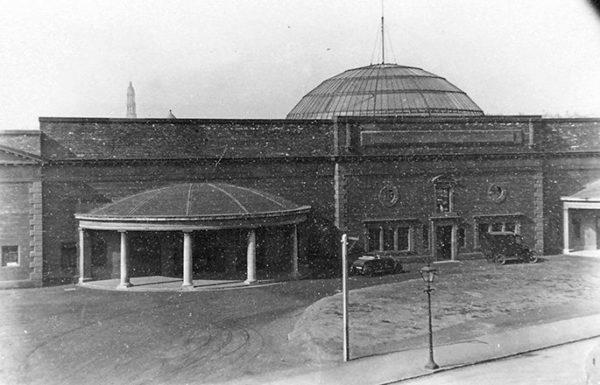
On 31 January, roller skating resumed and a new ballroom was opened to the public. An advertisement on the day before announced:
A perfectly prepared Wood Floor provides the largest and finest Dancing area in Edinburgh. Everything has been done to make the new Ballroom cosy and comfortable, and the ventilation is excellent. The latest Dance Music will be played by first-class Bands, and Light Refreshments are to be served in the daintiest manner. Admission 6d.
The Edinburgh Evening News reported on the following Monday:
Large crowds were present in the Industrial Hall, Annandale Street, Edinburgh, on Saturday evening when the dancing and roller skating sessions were opened.
Mr P.J. Ford, M.P., and Mrs Ford, were among those present, and Mr Ford, who is a director of the hall company, expressed thanks to the public for their attendance. The management, he said, would do everything they could to make the dance hall one of the most comfortable and up to-date in the country.
The dance hall erected within the building is 180 feet long by 70 feet wide, a special wood floor having been laid. Music is supplied by two bands. The skating rink is surrounded by Alpine scenery, the general effect being most appropriate and pleasing.
A Grand Carnival Dance was held on the evening of 25 February, with an international roller skating hockey match between Scotland and England taking place simultaneously under the same roof in Britain’s finest roller-skating rink. Similar activities followed in March, with the addition of specialist evening competitons. For men, there were obstacle and half-mile races; for ladies, a balloon race and potato and pail race. Couples were invited to take part in a lighted candle race.
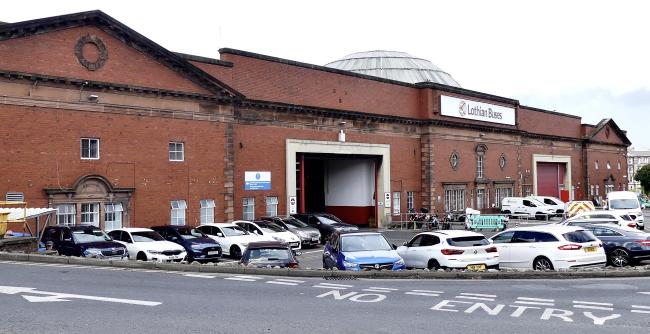
In March:
There was a gay scene at the Industrial Hall, Annandale Street, Edinburgh, last night, when a fancy dress ball was held. There were about 1000 present, including 200 couples in fancy costume.
Prizes were presented by Mrs P. J. Ford for the most original costume, the most humorous costume, and the most appropriately dressed couple.
And so it continued, night after night, week after week: novelty balls, fancy-dress parties and international football matches on roller skates, a dizzying round of merry repetitions. And the public were getting bored. By mid-April, dancing and skating at the Industrial Hall was reduced to just 2 nights a week. Otherwise, the Hall remained shut.
Finally, on 8 May, the Edinburgh Exhibition Association announced plans for an Empire Food Exhibition to be held from 14 to 28 October.
The exhibition is being held in co-operation with the Scottish Federation of Grocers and Provision Merchants’ Associations, and the patronage has been secured of the High Commissioners for Australia and Newfoundland, the Agents-General of the Australian Provinces, the Canadian Government Trade Commissioner for Scotland and Northern Ireland; the Town Councils of Edinburgh, Dundee, and Aberdeen; the Edinburgh Merchant Company, the Leith and South of Scotland Chambers of Commerce, and other bodies. The exhibition will be designed to secure the interest both of trade buyers and the general public.
Spirits were raised again in May with the announcement of a Grand Student Carnival expected to attract around 3,000 attendees. The evening, predicted the Edinburgh Evening News:
[…] will be given over to high jinks and revels. The programme in the arena will certainly be of the most fantastic and whimsical variety, including a great mannequin parade, then the costumes displayed will range from the prehistoric to the most up-to-date and futuristic productions.
The extensive floor space in the ballroom that evening will no doubt be crowded with a galaxy of fancy dress revellers. There will be an interesting series of ‘side-show’ attractions of the latest and most thrilling order. [Charitable offerings on the night eventually topped £1,200, which sum was later donated to the Royal Infirmary.]
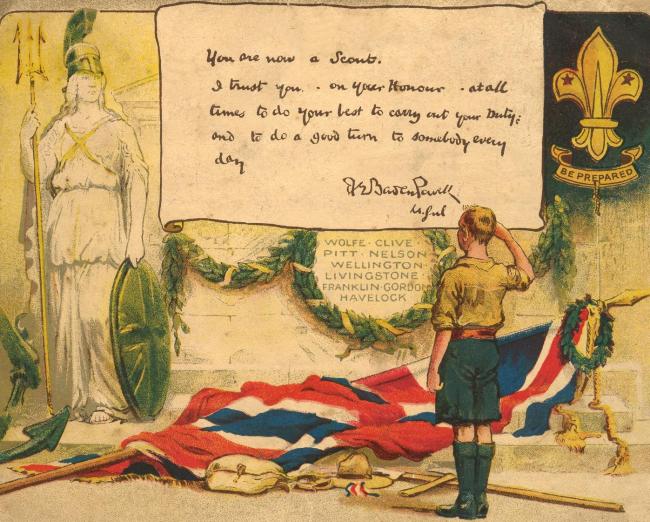
At the end of the May a Scout rally and handicraft exhibition was held The aim was summarised by the Scotsman as ‘More boys: more men: more money.’ About 1,200 scouts and 300 cubs were present.
Despite the counter-attractions of the open-air, large numbers of the public attended, and witnessed a comprehensive programme, which illustrated many of the activities of the Scout movement.
The displays given during the day included bridge-building, ambulance work, Highland dancing, boat drill, mat weaving, and basket making. At intervals entertaining selections were rendered by the Scout Massed Choir.
In July 2025 came shocking news from the West. The Kelvin Hall, Scotland’s largest and most successful exhibitions space, had burned down. Edinburgh-based analyses of the disaster just about managed to contain their delight This from the Edinburgh Evening News on 14 July 2025.
SCOTTISH MOTOR SHOW.
EDINBURGH SUGGESTED AS VENUE.
In view of the loss of the Kelvin Hall in Glasgow, the question has arisen as to the desirability of holding the next motor show in Edinburgh. It is understood that the Industrial Hall would be quite suitable for the purpose and would afford adequate accommodation, except for one or two sections which could be quite conveniently housed, in the Waverley Market.
It is suggested that in the last-named place the commercial vehicles or the motor cycles could be shown. As no stands would be required for these, such vehicles as required to be removed in order to permit of the Vegetable market being held each morning, could be easily handled, and the Industrial Hall would be exclusively utilised for the other classes of exhibits.
An important point is made of the desirability of holding the show in October or November. In the event of it being postponed till, say, February next year, when Glasgow might be ready to receive the show, the following summer's trade would suffer harm. Experience has shown that orders should he placed sufficiently early in the interests of the trade, as otherwise the season would be considerably curtailed.
The report was hopeful, even though it could not disguise the persistent problems of Edinburgh’s two principal venues: a lack of sheer scale.
Nonetheless, in the second half of 1925, The Industrial Hall’s commercial luck at last seemed to have changed. Follow our coverage on 19 September to find out what happened next.
Image top-right: SMcCandlish, WikimediaCommons.
Image of Industrial Hall: Courtesy of Lothian Buses.
For previous coverage see:
